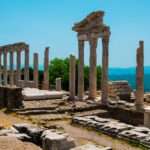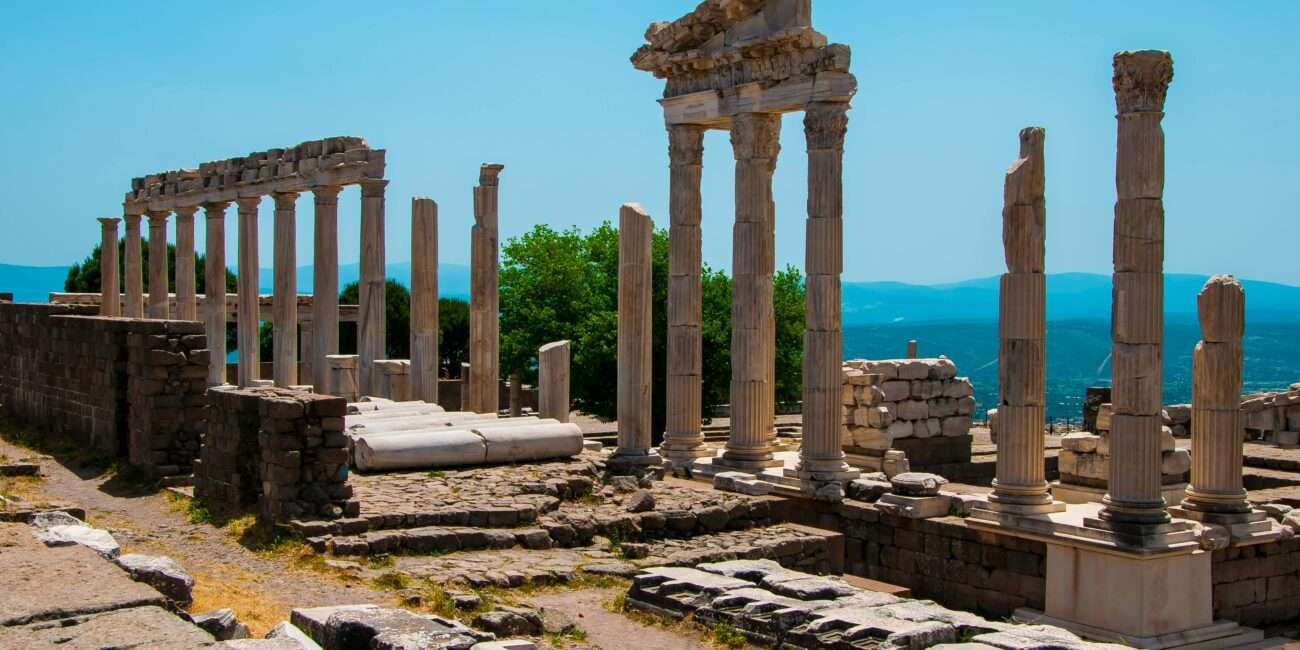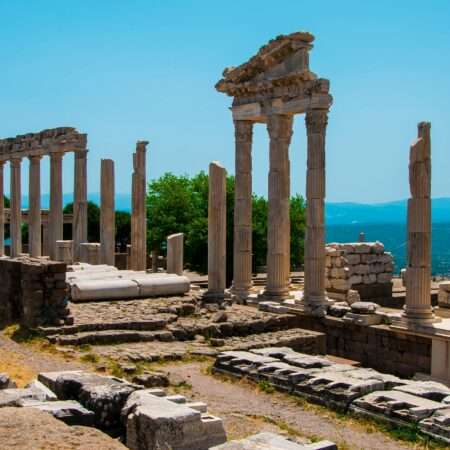Introduction to Pergamon
Situated in the modern-day town of Bergama in western Turkey, Pergamon (or Pergamum) was one of the most powerful cities of the ancient Greek world and a major cultural, political, and medical center of the Hellenistic and Roman periods. Known for its dramatic acropolis, world-class library, and pioneering medical center—the Asclepion—Pergamon offers visitors a rich tapestry of history and architecture that rivals even Ephesus.
A Brief History of Pergamon
- Foundation: Pergamon rose to prominence in the 3rd century BCE under the Attalid dynasty.
- Cultural Glory: It became a center of learning with a library said to rival Alexandria’s, containing over 200,000 volumes.
- Roman Integration: In 133 BCE, it was bequeathed to Rome and flourished as a Roman provincial capital.
- Religious Importance: Pergamon was home to temples for Zeus, Athena, and Asclepius, and later became one of the Seven Churches of Asia mentioned in the Book of Revelation.
How to Get to Pergamon
Pergamon is located in the town of Bergama, about 100 km north of Izmir.
- By Car: A 1.5–2 hour drive from Izmir.
- By Bus: Regular buses run from Izmir to Bergama.
- Guided Tours: Many tours include Pergamon as part of a historical circuit.
Key Sites in Pergamon
1. The Acropolis
Sitting atop a steep hill, the Acropolis of Pergamon is a striking site.
- Temple of Trajan: A well-preserved Roman temple with impressive Corinthian columns.
- Altar of Zeus: Once considered the finest altar ever constructed; its remains are now in Berlin’s Pergamon Museum.
- Theatre: A steeply tiered theatre with a capacity of 10,000 and breathtaking views over the plains below.
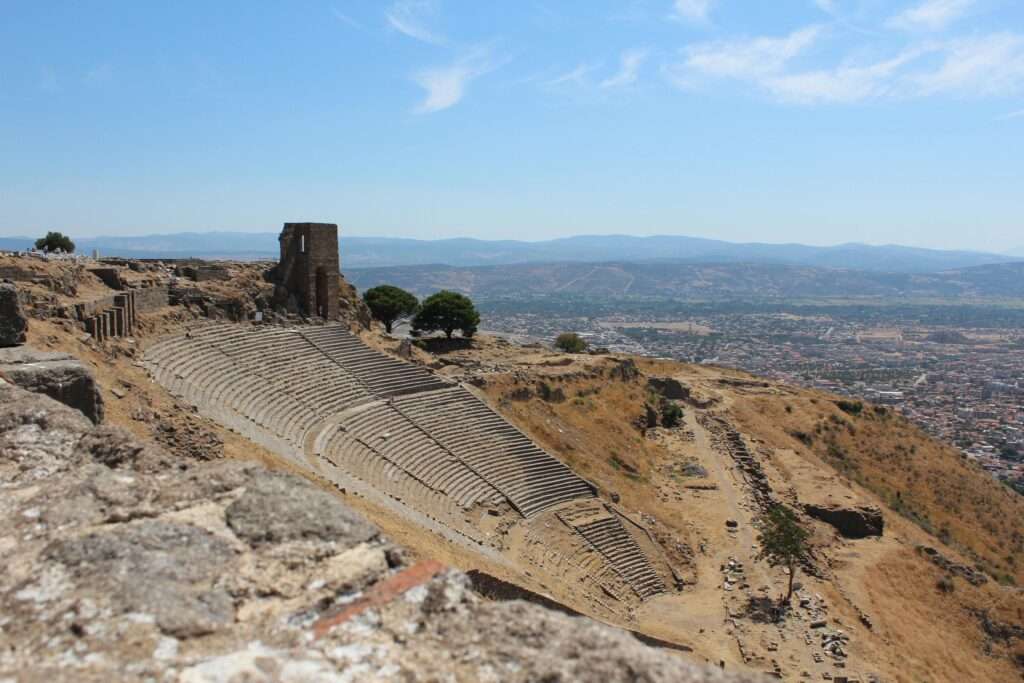
2. The Asclepion
One of the world’s first hospitals, dedicated to Asclepius, god of healing.
- Tunnels and Treatment Rooms: Visitors can explore ancient medical facilities and underground passages.
- Theater of the Asclepion: Used for music therapy and public lectures.
3. The Red Basilica (Kızıl Avlu)
A massive red-brick temple that was later converted into a church and mosque. It’s one of the Seven Churches of Asia.
Pergamon Library and Cultural Influence
Pergamon’s library once held hundreds of thousands of scrolls, making it a vital intellectual hub. It also gave rise to parchment (pergamina)—a durable writing surface that replaced papyrus.
Practical Travel Tips
- Opening Hours: 8 AM – 7 PM (in summer), shorter in winter.
- Entry Tickets: Different tickets are required for the Acropolis and the Asclepion.
- Best Time to Visit: Spring and autumn for comfortable weather.
- Accessibility: A cable car (teleferik) provides easy access to the Acropolis.
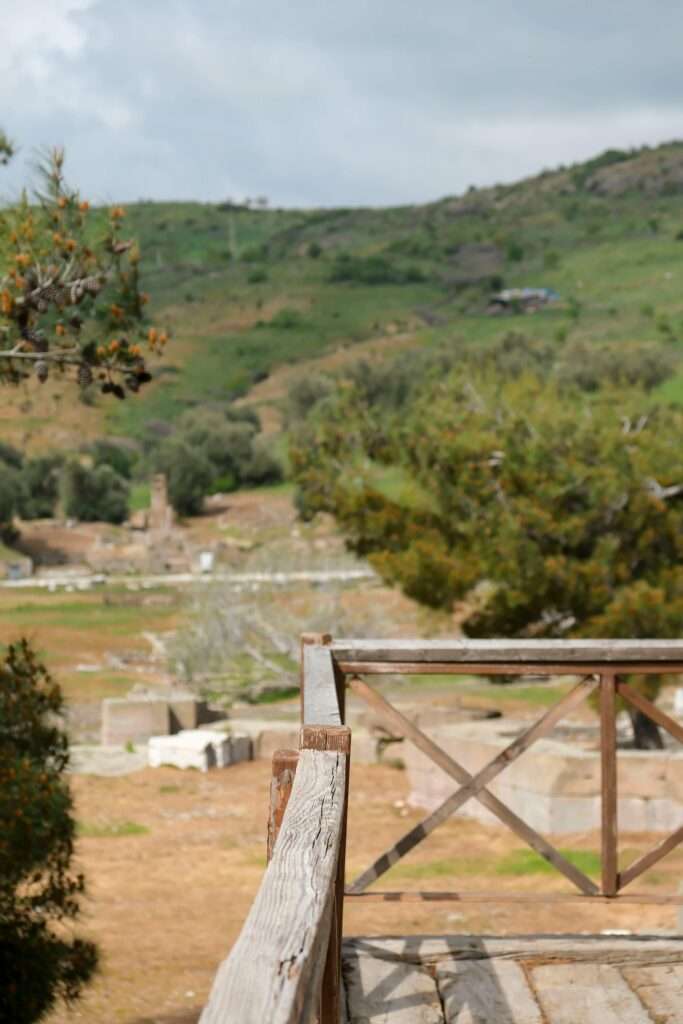
Where to Stay and Eat
- Stay in Bergama: Boutique hotels and pensions offer budget-friendly accommodations.
- Local Cuisine: Try local Aegean dishes like stuffed vegetables (dolma), lamb stew, and yogurt-based soups.
Nearby Attractions
- Dikili Coastline: For a refreshing seaside break after exploring ruins.
- Ayvalık and Cunda Island: Lovely coastal towns 1–1.5 hours away.
Why Visit Pergamon?
Pergamon is perfect for travelers who love archaeological sites with a dramatic setting and rich historical layers—from royal dynasties to Roman emperors, ancient medicine to early Christianity.


